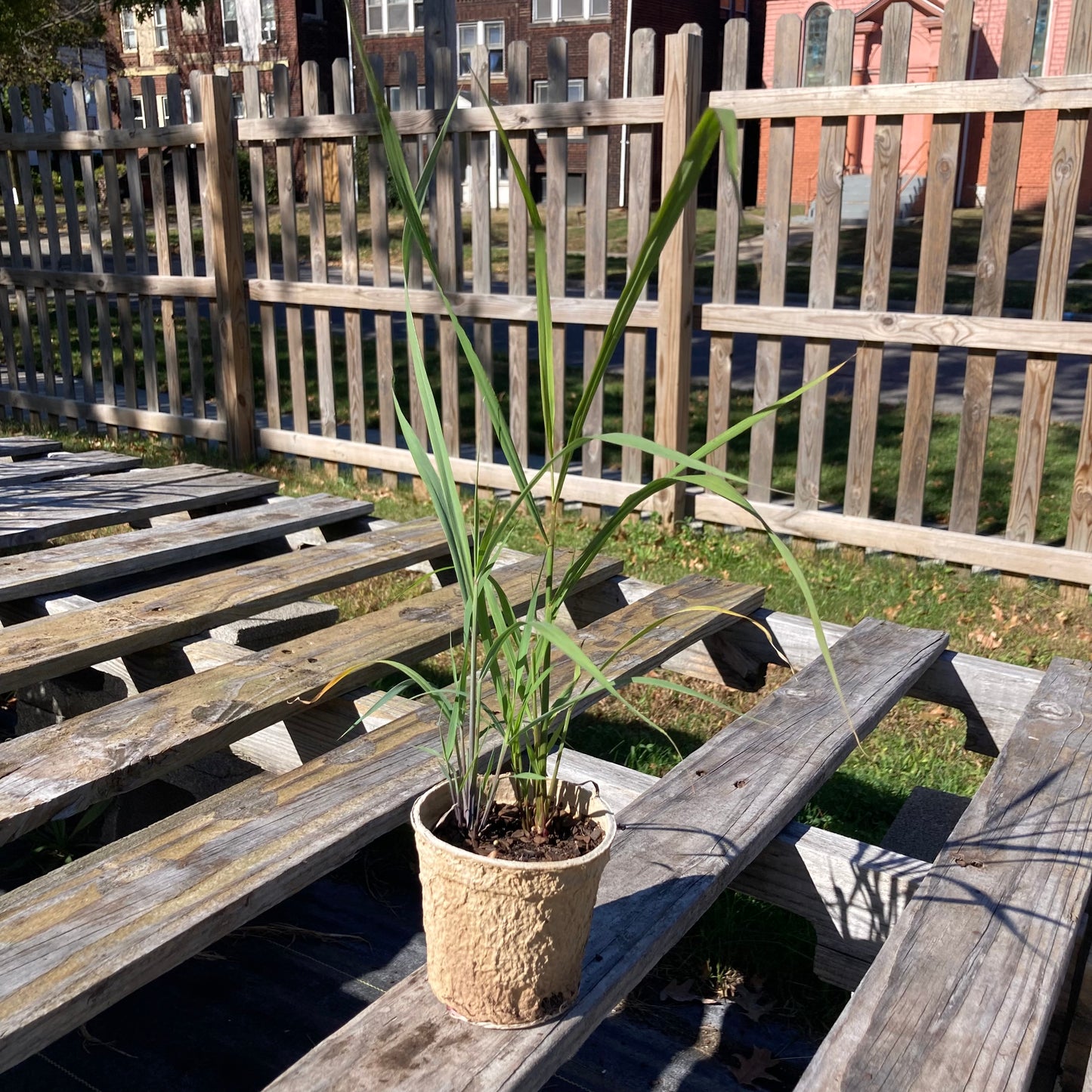Indian grass
Sorghastrum nutans
Sorghastrum nutans
59 remaining
Couldn't load pickup availability
Sun/shade: Full sun
Soil moisture: Dry to medium
Height: 6'
Flowering period:
Deer resistance: High
Indian grass’s bronze flower cluster contrasts beautifully with its tall, blue-green stems, and displays maize highlights when in bloom. The flowers are unusually showy for a grass, adorned with pendant little stamens of a soft yellow hue.
Indian grass is one of the principal grasses of the North American tallgrass prairie, which was once extensive across the great plains states west of Ohio. Within the prairie, Indian grass occupies a very similar niche to big bluestem, occurring primarily in well-drained lowland areas under full sun. Neighboring prairie grasses include switchgrass in wetter lowland areas and little bluestem in dry uplands. In NE Ohio, Indian grass can be found growing in meadows and along roadsides.
At 5-7 feet tall, Indian grass is an impressive, colorful grass that will do well in any sunny home landscape of average moisture or drier. Caution must be exercised in placing Indian grass within a wildflower garden, however, due to the grass’s dominant nature. Indian grass is a sod-forming grass that spreads by short rhizomes and also by seeds which germinate readily. Only robust, usually tall flowers such as giant sunflower, prairie dock, and tall coreopsis are good at holding their own against Indian grass. In large gardens, Indian grass is a majestic plant for the back border, separate from the wildflowers and other plants of the garden interior. Indian grass also makes a great ornamental grass along paths and driveways. Due to good drought tolerance, Indian grass is quite useful for planting in dry parts of the yard.
In terms of wildlife value, Indian grass has a lot to offer, serving as a source of both food and shelter. The plant’s seed is consumed by a variety of songbirds and small mammals. The thatch of old stems which develops at the base of the plant provides cavities in which native bees nest and overwinter. Birds also find winter shelter among Indian grass stems and some species, such as field sparrows and grasshopper sparrows, nest within the cover that the grass creates.
Photo by Marcie Hebert.



